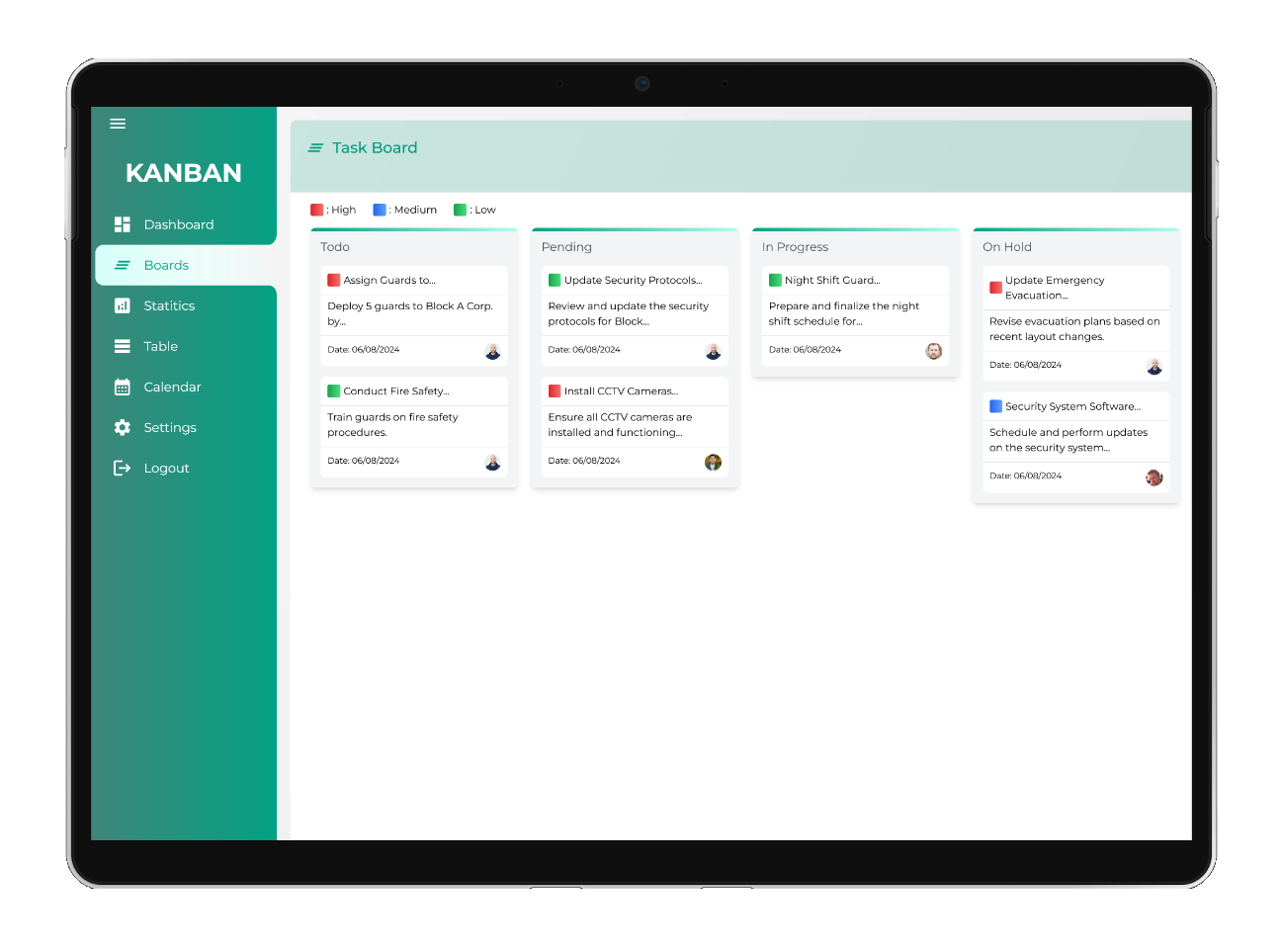In today’s fast-paced business environment, managing tasks efficiently and effectively is essential for organizational success. Traditional task management methods, such as paper-based systems and manual tracking, can be cumbersome and prone to errors. Digital TCard software offers a modern solution to these challenges, transforming how tasks are tracked, managed, and executed.

Understanding Digital TCard Software
Digital TCard Software provides a digital platform for managing tasks and projects through virtual task cards. Unlike traditional paper cards or spreadsheets, digital TCard systems offer a dynamic and interactive way to visualize, organize, and manage tasks. These digital cards can be customized, moved, and updated in real-time, providing a flexible and user-friendly interface for task management.
Key Features:
- Task Boards: Visual boards where tasks are represented as digital cards. These boards can be organized by project, team, or workflow stage.
- Real-Time Updates: Instant updates to task statuses, comments, and changes, ensuring that all team members have access to the latest information.
- Automation: Automated task assignments, reminders, and notifications to streamline task management and reduce manual effort.
- Integration: Seamless integration with other business tools, such as project management software, CRM systems, and communication platforms.
- Reporting and Analytics: Advanced reporting tools to track task performance, productivity, and workflow efficiency.
Benefits of Digital TCard Software
1. Enhanced Visualization and Organization
Digital TCard software enhances task visualization and organization by providing a clear, visual representation of tasks and workflows. Digital cards can be easily moved and organized on task boards, allowing teams to quickly understand the status, priority, and dependencies of each task. This visual approach simplifies task management and helps prevent misunderstandings and oversights.
2. Real-Time Collaboration
Real-time updates are a significant advantage of Digital TCard software. As tasks progress or changes occur, updates are instantly reflected in the digital cards. This feature promotes transparency and ensures that all team members are on the same page. Collaboration tools such as comments, attachments, and notifications facilitate effective communication and coordination among team members.
3. Increased Efficiency Through Automation
Automation features in Digital TCard software streamline repetitive tasks and reduce manual effort. Automated task assignments, reminders, and notifications help ensure that tasks are completed on time and that team members are informed of their responsibilities. By minimizing manual interventions, automation improves accuracy and efficiency in task management.
4. Seamless Integration
Digital TCard software integrates with various business tools, enhancing its functionality and streamlining workflows. Integration with project management software, CRM systems, and communication platforms allows for a cohesive and efficient workflow. For example, integrating with a CRM system can automatically update task statuses based on customer interactions, reducing the need for manual updates.
5. Advanced Reporting and Analytics
Reporting and analytics features provide valuable insights into task performance and workflow efficiency. Customizable reports and dashboards enable teams to track key metrics, such as task completion rates, project timelines, and resource allocation. These insights help identify bottlenecks, measure productivity, and make data-driven decisions to optimize task management processes.
Implementing Digital TCard Software
1. Assess Your Needs
Begin by assessing your organization’s task management needs and workflow requirements. Identify key processes, task types, and areas where improvements are needed. Engage with team members to understand their preferences and challenges, and use this information to select a Digital TCard software solution that aligns with your needs.
2. Customize and Configure
Customize and configure the software to meet your specific workflow needs. Set up task boards, define card types, and establish workflows based on your team’s processes. Configure automation features, integrate with other tools, and set user permissions to tailor the software to your requirements.
3. Monitor and Optimize
After implementation, continuously monitor the software’s performance and gather feedback from users. Analyze workflow data to identify areas for improvement and use the software’s reporting and analytics features to assess its impact on task management. Make adjustments as needed to enhance efficiency and address any issues.
4. Encourage Adoption and Best Practices
Promote the use of Digital TCard software by encouraging team members to embrace its benefits and follow best practices. Foster a culture of collaboration and continuous improvement by regularly reviewing task management processes and seeking input from users on potential enhancements.
Conclusion
Digital TCard Software offers a powerful solution for transforming task tracking and management. By providing a visual, interactive approach to task management, real-time updates, and automation, this software enhances efficiency, collaboration, and productivity. Effective implementation involves assessing needs, selecting the right software, customizing it to fit your requirements, and continuously monitoring performance. With the right approach, Digital TCard software can significantly improve task management processes, leading to better organizational outcomes and success in achieving strategic goals.